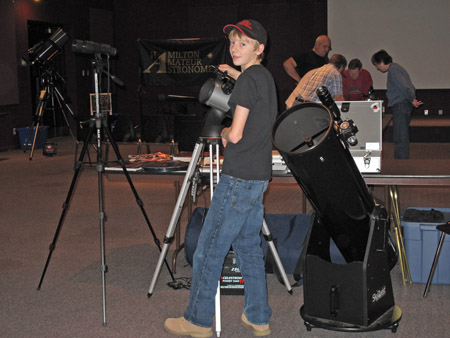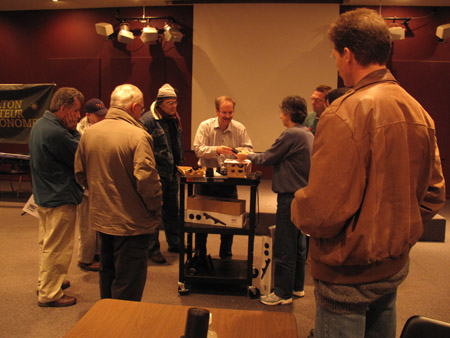Here’s a listing of the doubles i was expounding in my Talk last night.
They are in Orion.
All of these multiple star systems are within a minute of arc
in size. The tightest one, Zeta, is only 2.4 arc seconds, and will
test your telescope, but don’t dispair, it’s a triple star and you can
separate the larger separation easily.
In order of increasing difficulty,
(1) Mintaka, the western star in Orion’s belt (2.2, 6.3)
(2) Iota, the tip of the sword, (2.8, 6.9). Note the colours
(3) and in the same field of view, Struve 747 (4.8, 5.7)
(4) Theta 2, a wider grouping just east of the Trapezium
(5) 1/3 degree south of Betelgeuse, is Struve 817. Evenly matched, 8.2 and 8.3. Can you discern which is the brighter one?
Now reach for the telescope…
(3) Lambda, Orion’s Head (3.6, 5.5)
(2) Rigel, the western foot (or is it a knee?) (0.1, 6.8, 1/600 of a degree)
(8) Theta 1, the ‘Trapezium’ in the heart of the Orion Nebula – do you agree it’s the finest looking multiple star system in the sky?
(9) Sigma, near the eastern star of Orion’s Belt… it’s one of the brightest and most massive double star in the sky.
Those stars are more than 30 thousand times brighter than the sun, each) (4.0, 7.5, 6.5) The close pair is 12 arcseconds.
(10) Zeta Orionis, the eastern star in Orion’s Belt. It’s a triple (1.9, 4.0, 9.9) (The close pair is 2.4 arcseconds apart)
9 of these are on the “Astronomical Leage’s” top 100 Double Stars.
If you observe them, do a little sketch. If you get these, and the other 90, there’s an award for you!
Clear Skies!
Steve



